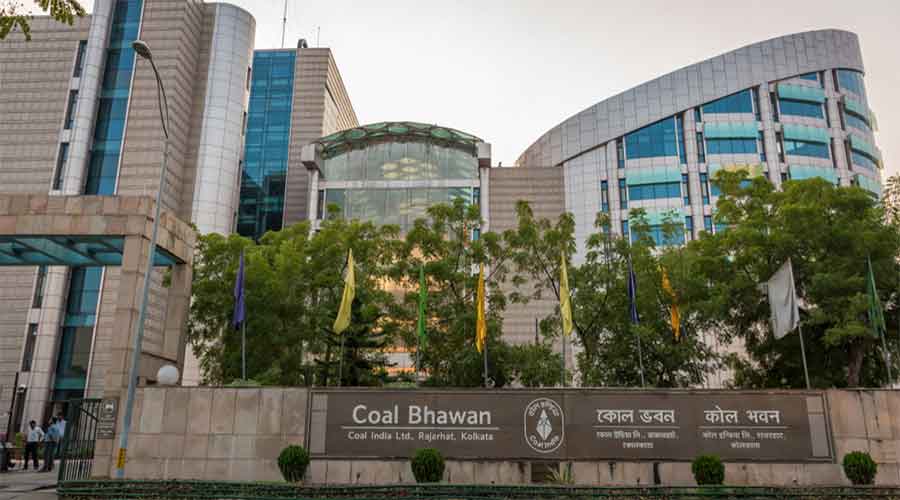Coal India Limited (CIL) stands as a cornerstone of India’s energy infrastructure and the backbone of the country’s coal industry. Recognized globally, CIL holds the distinction of being the world’s largest coal producer, both in terms of production volume and market share. As a state-owned Maharatna company, CIL plays a pivotal role in fulfilling India’s growing energy needs by ensuring a steady supply of coal to various sectors, including power generation, steel manufacturing, cement, and other core industries.

Overview of Coal India Limited (CIL)
Founded in November 1975, Coal India Limited was established with the aim of managing and optimizing India’s coal production and distribution. Headquartered in Kolkata, West Bengal, CIL operates under the administrative control of the Ministry of Coal, Government of India.
Key facts about CIL:
-
Listed on the NSE and BSE
-
Holds Maharatna status, signifying its high operational and financial autonomy
-
Contributes over 80% of India’s coal production
-
Employs approximately 250,000 workers, making it one of the largest employers in India
Global Recognition
CIL’s title as the world’s largest coal producer is not just a statistic—it represents the scale and efficiency of its mining operations. The company consistently extracts over 600 million tonnes of coal annually, a figure unmatched by any other coal-producing company globally. Its massive production capacity supports India’s energy security and industrial growth.
CIL’s Operational Structure
To manage its vast operations efficiently, CIL operates through eight subsidiaries engaged in coal production and one subsidiary for mine planning and consultancy services. Each subsidiary operates in specific coal-rich regions of India, facilitating region-wise coal extraction and logistics.
Some of the key subsidiaries include:
1. South Eastern Coalfields Limited (SECL)
-
Headquartered in Bilaspur, Chhattisgarh
-
One of the highest coal-producing subsidiaries of CIL
-
Major contributor to CIL’s annual output
-
Operates in both Chhattisgarh and Madhya Pradesh
2. Western Coalfields Limited (WCL)
-
Headquartered in Nagpur, Maharashtra
-
Operates primarily in Maharashtra and Madhya Pradesh
-
Known for both underground and open-cast mining operations
3. Northern Coalfields Limited (NCL)
-
Based in Singrauli, Madhya Pradesh
-
Specializes in open-cast mining
-
Supplies coal to major thermal power plants in northern India
4. Eastern Coalfields Limited (ECL)
-
Located in Sanctoria, West Bengal
-
Focused on underground mining
-
Operates in Jharkhand and West Bengal
5. Central Coalfields Limited (CCL)
-
Headquartered in Ranchi, Jharkhand
-
Among the oldest subsidiaries with significant coal reserves
6. Mahanadi Coalfields Limited (MCL)
-
Based in Sambalpur, Odisha
-
Known for high-quality thermal coal
-
Supplies to power plants in eastern and southern India
7. Bharat Coking Coal Limited (BCCL)
-
Based in Dhanbad, Jharkhand
-
Specializes in coking coal, vital for steel manufacturing
8. North Eastern Coalfields (NEC)
-
Operates in Assam
-
Smallest among the subsidiaries but strategically important for the northeast region
9. Central Mine Planning & Design Institute (CMPDI)
-
Offers planning, consultancy, and environmental management services
-
Integral to CIL’s project planning and execution strategies
Economic and Strategic Importance
CIL not only fuels thermal power plants but also plays a strategic role in India’s energy security and industrial development. It generates significant revenue for the Indian government through dividends and taxes, and its large-scale operations have a multiplier effect on local economies, infrastructure development, and employment.
Challenges and Future Outlook
While CIL is a dominant force in the coal industry, it faces challenges such as:
-
Environmental regulations and climate change concerns
-
Transition towards renewable energy
-
Land acquisition and rehabilitation issues
-
Increasing demand for cleaner coal technologies
To remain competitive and environmentally sustainable, CIL is focusing on:
-
Modernizing mining operations
-
Diversifying into coal gasification and renewables
-
Improving coal quality and logistics efficiency

